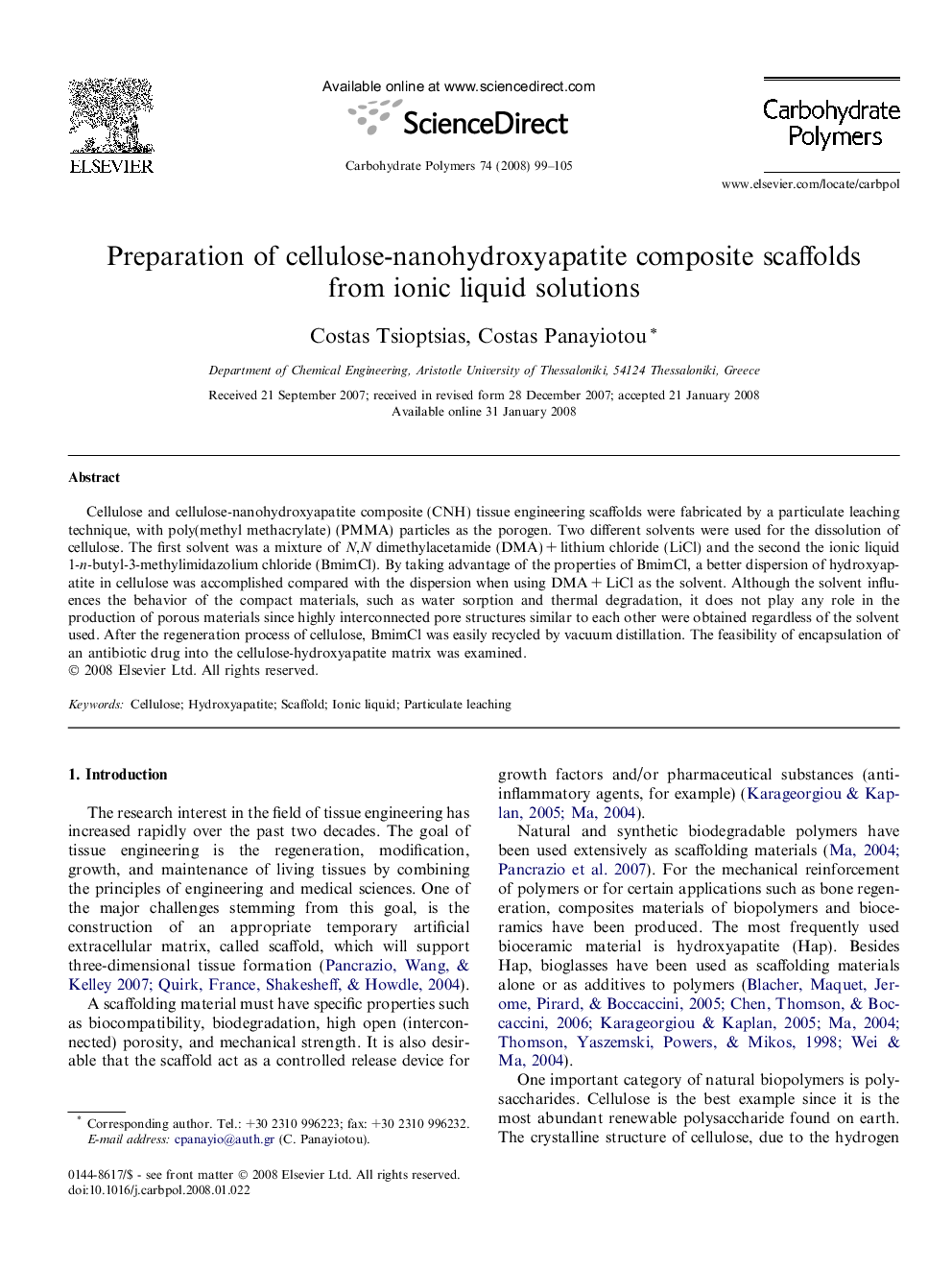| Article ID | Journal | Published Year | Pages | File Type |
|---|---|---|---|---|
| 1384482 | Carbohydrate Polymers | 2008 | 7 Pages |
Cellulose and cellulose-nanohydroxyapatite composite (CNH) tissue engineering scaffolds were fabricated by a particulate leaching technique, with poly(methyl methacrylate) (PMMA) particles as the porogen. Two different solvents were used for the dissolution of cellulose. The first solvent was a mixture of N,N dimethylacetamide (DMA) + lithium chloride (LiCl) and the second the ionic liquid 1-n-butyl-3-methylimidazolium chloride (BmimCl). By taking advantage of the properties of BmimCl, a better dispersion of hydroxyapatite in cellulose was accomplished compared with the dispersion when using DMA + LiCl as the solvent. Although the solvent influences the behavior of the compact materials, such as water sorption and thermal degradation, it does not play any role in the production of porous materials since highly interconnected pore structures similar to each other were obtained regardless of the solvent used. After the regeneration process of cellulose, BmimCl was easily recycled by vacuum distillation. The feasibility of encapsulation of an antibiotic drug into the cellulose-hydroxyapatite matrix was examined.
